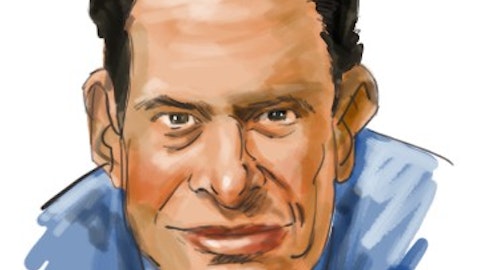In the past year, portfolios with a penchant for farming and construction stocks have been burned, as the industry has lost over 13 percent. Within this basket of companies lies some of the most revered names in the American – and international – business world, most notably Caterpillar (NYSE: CAT) and Deere & Co (NYSE: DE). While both of these companies have been in the red since the start of 2012, smaller competitors like CNH Global (NYSE: CNH) and Terex Corp (NYSE: TEX) have been kinder to shareholders’ pockets, outperforming the broader market significantly. More importantly, though, all four of these stocks have been down an average of 18.3 percent over the past month, as continued concerns over the Eurozone crisis and slowdowns in Latin American and China have spooked investors. For value hunters, this may present a buying opportunity, as it is always worth picking through the proverbial bargain bin if the price is right.
As the largest manufacturer of heavy machinery in the world, Caterpillar is the industry’s unequivocal alpha dog, and I’m not talking about the Justin Timberlake movie. All B-rated movie jokes aside, CAT has been a force since the recession, as it has almost tripled in value over the past three years. This appreciation has been driven by strong top line growth, in which revenue has grown from $32.4 billion in 2009 to $60.1 billion in the last fiscal year. The Illinois-based company has also seen its earnings per share more than quintuple – yes that’s an increase of five times – over this same span.
Last week, CAT peeved shareholders when it announced that global sales in construction equipment had slowed over the past three months ending April, as a 32 percent growth in North America was hampered by lower-than-expected sales in Latin America and China. It should be mentioned, however, that this still marked the 23rd straight quarter in which CAT saw sales growth – a remarkable streak indeed. With its stock down over 7 percent during the last five days of trading, investors should take notice of attractive valuation metrics. Even though the company has grown its earnings at a remarkable pace, CAT is currently sporting a P/E ratio of 11.2X, which is way below the company’s 10-year historical average of 18.6X. Moreover, CAT has a Forward P/E of 7.8X – below its closest competitor DE – and a very appealing PEG ratio of 0.5. Interestingly, the company’s P/CF ratio tells the same story, even though CAT grew its free cash flow by nearly 30 percent last year – this was also more impressive than DE.
Speaking of Deere & Co, investors also may be wise to consider this company, which is the leading supplier of agricultural equipment in the world. Since 2009, DE has grown its revenues by an average of almost 20 percent each year, with earnings per share increasing from $2.06 to $6.63 in this same time period. DE currently sports a P/E below its 10-year average, and a PEG ratio of 0.8. As the company is heavily involved in the agribusiness, its shares have a heavier exposure to fluctuations in commodity prices. A recent example of this relationship could be seen last week, when DE reported record earnings, but saw its stock drop 2 percent, as corn prices declined. While the overall commodity market is currently in a flux, an ever-growing global demand will continue to push prices upwards in the long run. All things considered, now may be the best time to get into DE, based on its attractive growth and valuation metrics.
As mentioned above, smaller construction companies like CNH Global and Terex Corp have seen their shares rise since the start of 2012, specifically by 7.14 and 20.5 percent respectively. In terms of revenues, CNH saw its top line grow by nearly 25 percent last year to $19.2 billion. TEX, meanwhile, experienced a revenue growth of 47 percent to eclipse a year-end total of $6.5 billion, but had difficulty translating this to the bottom line, as earnings shrank from $3.30 to $0.41 a share. This is something that CNH has been particularly skilled at, as its EPS doubled last year to $3.91. From a valuation standpoint, CNH also looks like the more attractive of the two, as its P/E of 8.8X is below the industry average of 10.7X, and that of TEX (33.1X). Moreover, TEX currently sports a P/CF ratio of 104.2X compared to CNH’s of 18.8X. Perhaps the final detriment to Terex is that over two-thirds of its sales are generated from outside North America, which exposes the company to sales slowdowns in Europe, Latin America, and China that have already plagued CAT.
Aside from TEX, each of these companies can offer investors impressive earnings growth at an attractive valuation. In fact, many of the world’s most successful hedge funds are bullish on CAT, DE, and CNH. As of the end of last year, managers Steven Cohen, D.E. Shaw, and Ken Fisher all held these stocks in their portfolios. All in all, investors may be wise to consider long positions in Caterpillar, Deere, and CNH Global, while staying away from Terex.


